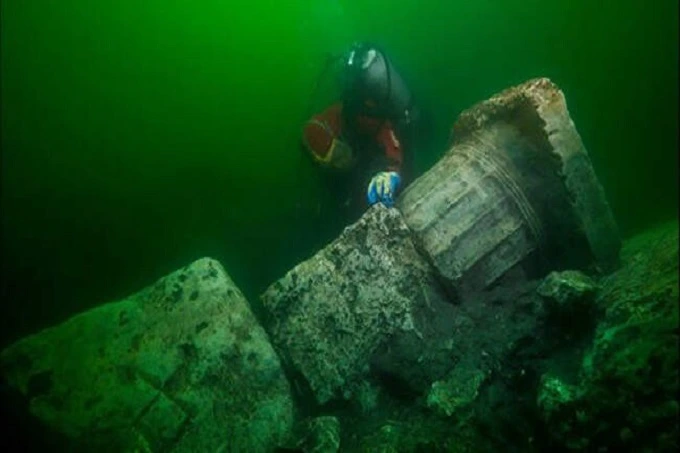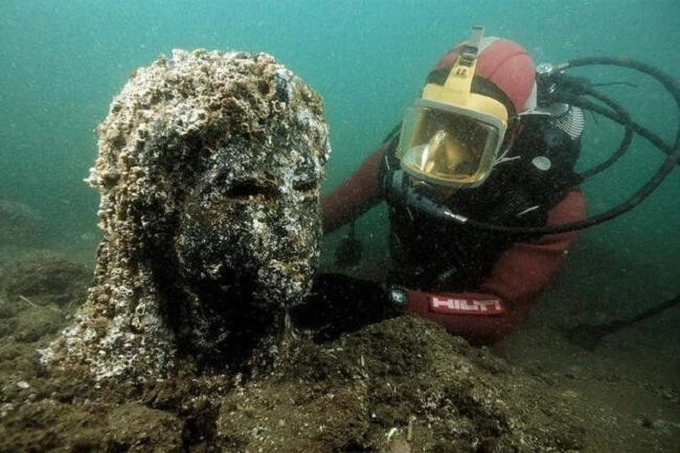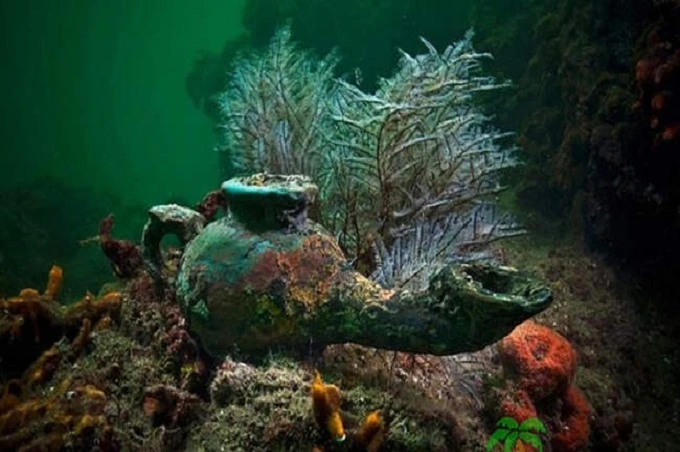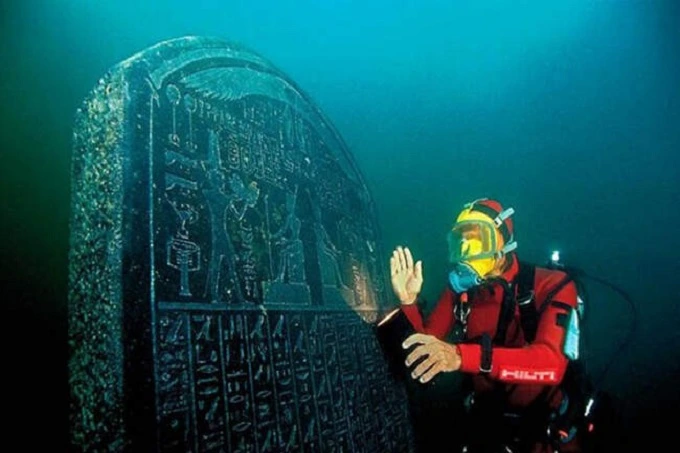Heracleion: is the underwater city really the Atlantis

The world we live in is filled with mysteries, both those that have been solved and those that have not been. At some point in their lives, at least once, everyone has been exposed to the myth of the vanished metropolis of Atlantis.
Only a small percentage of people know that there are hundreds of myths and lost cities like this throughout the planet. However, sometimes old writings and archaeological finds give more questions than answers, and historians all around the world have been working hard for years to decipher these mysterious mysteries. The history of the ancient temple city of Heracleion, unearthed in 2000 by Franck Goddio, brings all of the stories about Atlantis into the realm of possibility.
Heracleion was the subject of the writings of a great number of ancient historians, including the Greek historian Herodotus, who lived in the fifth century B.C. A significant urban centre was constructed in the name of Amon Ra, the Egyptian god of the sun and the most important deity in the Egyptian pantheon.
The story goes that Paris and Helen of Troy the Beautiful hid here before the Trojan War in this ancient city. The city was said to have been founded following the mythology that Diodorus related. It is said that Hercules obstructed the path of the Nile to save the people who lived along the coast. People expressed their thanks to the individuals who laid the groundwork for the city at this location and chose to name it after the savior hero. In addition, the city featured a magnificent temple that was constructed in Hercules’ honor.

Strabo, a Greek historian, and geographer described the city of Heracleion. He stated that the city might be found to the east of Canopus, near the mouth of the Nile River. It was constructed somewhere in the eighth century B.C. Sand and clay made up the ground beneath the structure as it was being built. According to the theory put out by the investigators, Heracleion was eventually submerged to a depth of around five hundred meters due to the various fluctuations in the sea level and the frequent earthquakes in the region.
In the year 2000, a team of underwater archaeologists from the European Institute of Underwater Archaeology led by Franck Goddio searched the region for the sunken ships that were part of Napoleon’s fleet. In 1798, the British fleet commanded by Admiral Nelson sank all of them. As a direct consequence, the Goddio crew stumbled upon the remnants of an ancient city when they were exploring the ocean floor.
A cursory investigation already provided sufficient evidence to support the presumption that this location is home to a sizable commercial centre. Majestic place of worship, exquisite statues of Greek gods, many residential buildings, and ports for commercial vessels. In addition, massive amounts of gold and precious stones were discovered. The word “Heraclion” was engraved into a piece of black granite found in an unknown city.

Before announcing that he had found the legendary lost city, Franck Goddio labored diligently in the field of research for six years. He had never before entertained the possibility that it existed. Ancient Egypt’s
He was known as Thonis to the Egyptians, but the Greeks referred to him as Heracleion. The locals enjoyed a luxurious living thanks to the prosperous trade that took place here. In this location, the legendary queen Cleopatra was given her royal title.
Alexander the Great successfully conquered Egypt, and in the year 331, he established the city of Alexandria, thirty kilometers away. Alexandria grew to become the most populous and wealthiest city during that historical period. According to the Encyclopedia of Ancient History, the city was known for its world-famous library, contributing to its status as a prominent study center. As a result, the city attracted scholars such as Archimedes and Euclid. Heracleion saw a decline in power and importance as Alexandria rose to prominence. It started to deteriorate gradually and eventually became entirely unimportant.
Although they are neither particularly numerous nor wealthy, the treasures of Heracleion have been properly maintained thanks to the city’s location beneath the sea. By examining these artifacts, one may gain a very distinct picture of how the Greeks and Egyptians lived throughout the time in which this location was a major busy port.

Incredible treasures, including a statue made of red granite five meters tall, were recovered from the ocean floor. Statues of the god Hapi and the goddess Isis, identical to one another, were also brought to the land. Researchers believe that this statue depicts the Egyptian king Ptolemy II. Archaeologists have found significant artifacts and hundreds of amulets, miniature sculptures of gods, and sarcophagi containing the mummies of animals that were offered as sacrifices to Amon.
One of the most extensive burial grounds for ancient ships is located at Heracleion. Goddio discovered more than sixty-three anchors, and his team arranged them in a row as if they were in a parking lot. Among the wreckage of the ships were discovered heaps of gold, jewelry, gold coins, weights made of bronze and lead, and ceramic artifacts. In addition, steles and columns with Egyptian hieroglyphic writings were discovered in the port in pristine condition. The stele kept a record of the ships that visited the port and the fees, levies, and taxes they were required to pay.
As a result of the construction of a great number of canals, Heracleion came to resemble Venice. Places that were far from the heart of the city were chosen for the construction of residential structures. Surprisingly, many artifacts found had Greek origins but were inscribed in the Egyptian language, and vice versa. This exemplifies the extremely strong commercial and economic relations between the two countries of Egypt and Greece.
As a result, the long-guarded mystery surrounding the cities of Thonis and Heracleion was brought to light. Egyptian and Greek are the two names used to refer to the same city. Archaeologists have only excavated a small portion of the city, and Frank Goddio claims that the city is three times larger than Pompeii. He believes that in the not-too-distant future, we will come across significant and interesting new findings.




